Spiny devil lizards use their skin as a water siphon, helping them survive in the arid deserts of Australia.
In research published in the journal Experimental Biology, scientists at the University of Western Australia (UWA) showed that one of the main ways for spiny devil lizards to drink water is to bury their bodies in moist sand, then suck the water out. from the sand.
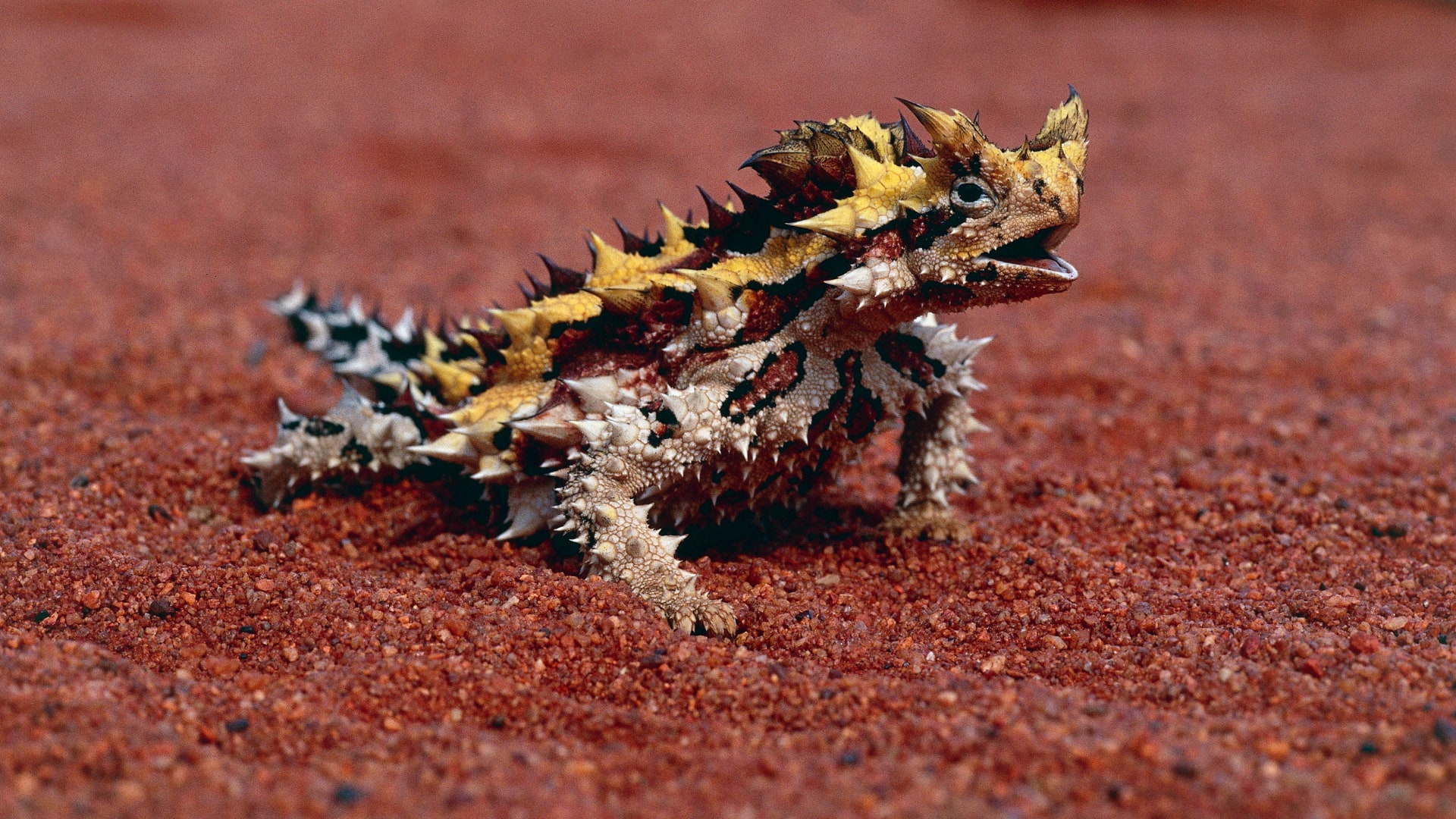
The spiny devil lizard, scientific name Moloch horridus, is an animal that lives in arid deserts and sandy plains in central and western Australia, according to ABC News.
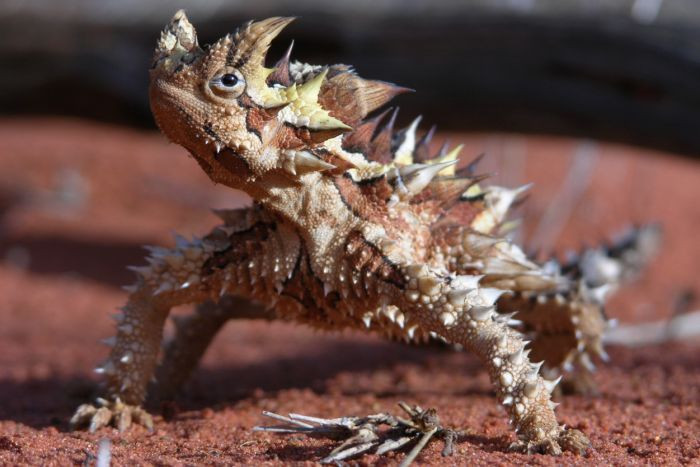
Spiny devil lizards are adapted to the arid living conditions of the Australian deserts. (Photo: Flickr).
Philip Withers, co-author of the study, said the unusual skin is a very important factor for the spiny devil lizard’s survival in harsh desert weather conditions. “Their special skin system has evolved and is really quite strange,” Withers said.
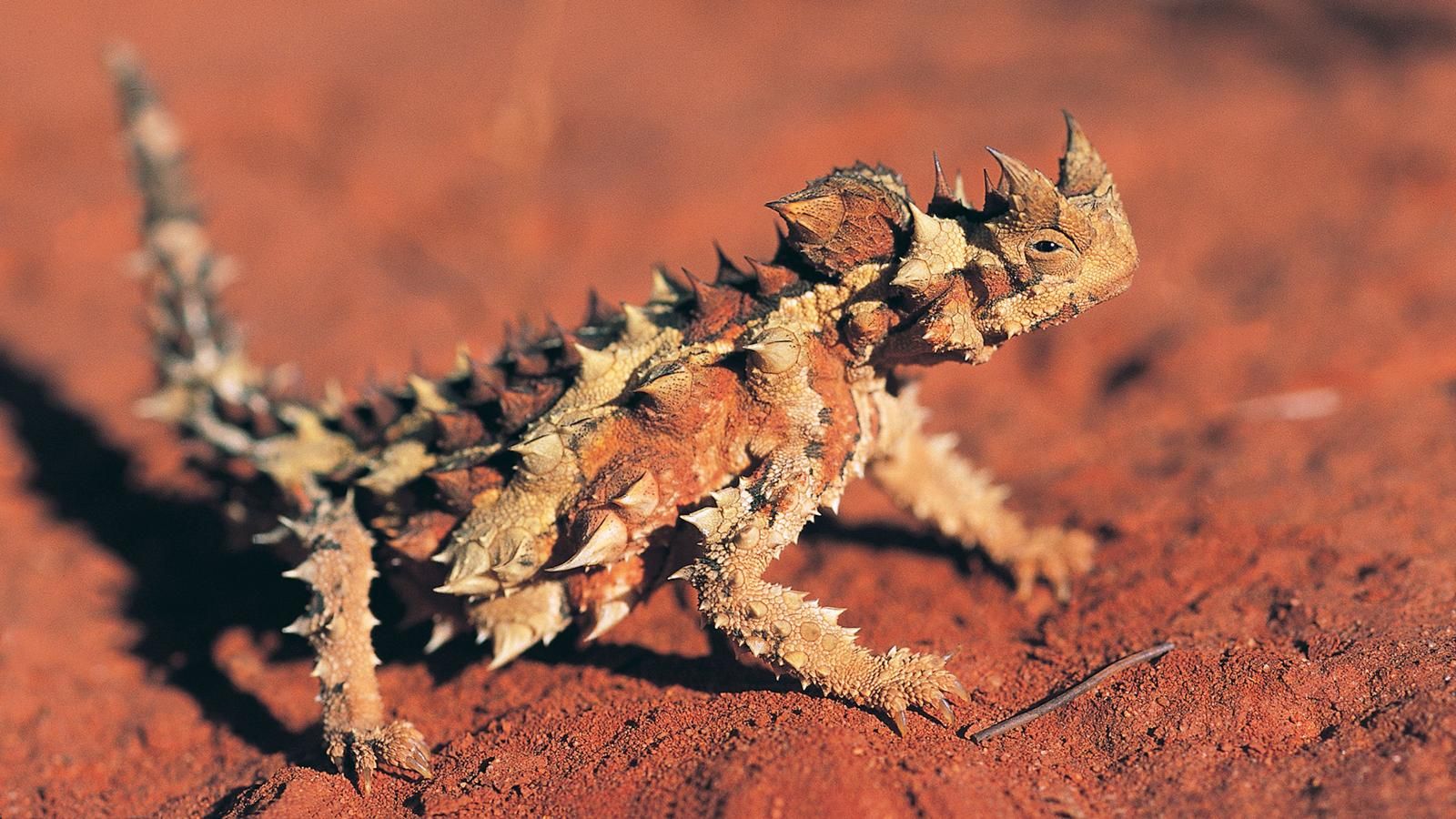
Capillary tubes in the spiny devil lizard’s skin help collect water from the moisture in the sand, then push it toward the mouth. Although scientists have known about this mechanism for a long time, they were not sure whether the animal was capable of filling the capillaries and drinking water by standing on wet sand.
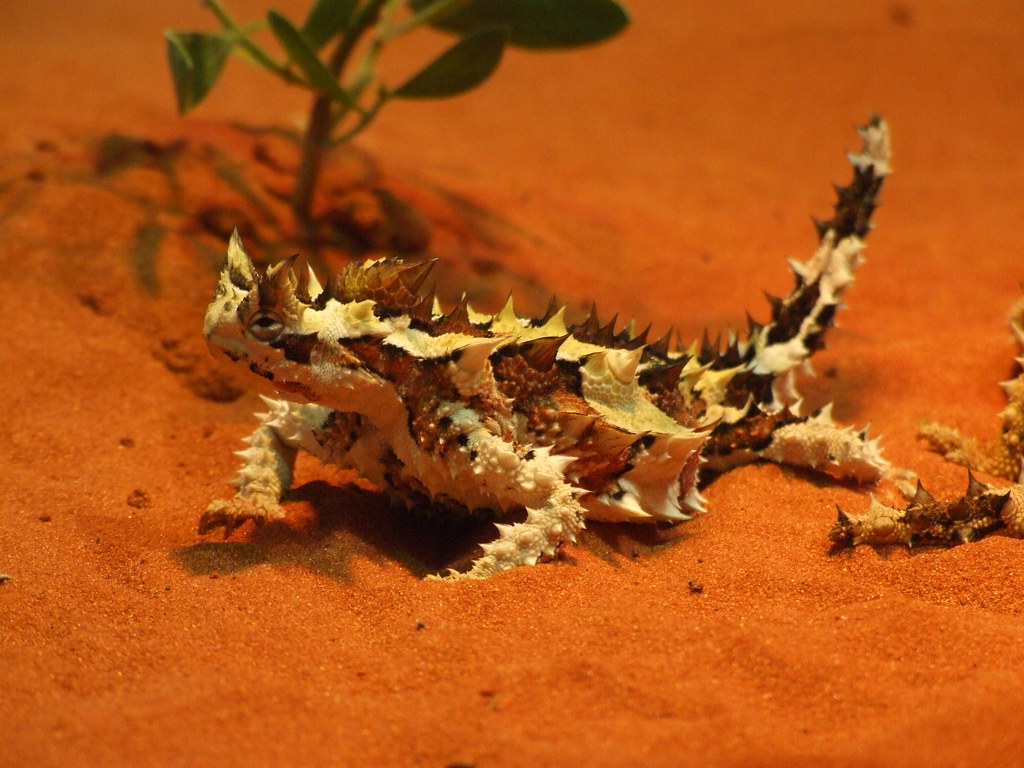
To learn more, the research team analyzed the amount of water that six spiny devil lizards could drink in different situations. The results showed that all six animals opened and closed their mouths to drink water after just 10 seconds, as soon as they were placed in a puddle of water. But if they were placed on wet sand, 59% of the capillaries filled up and the lizards did not drink water.
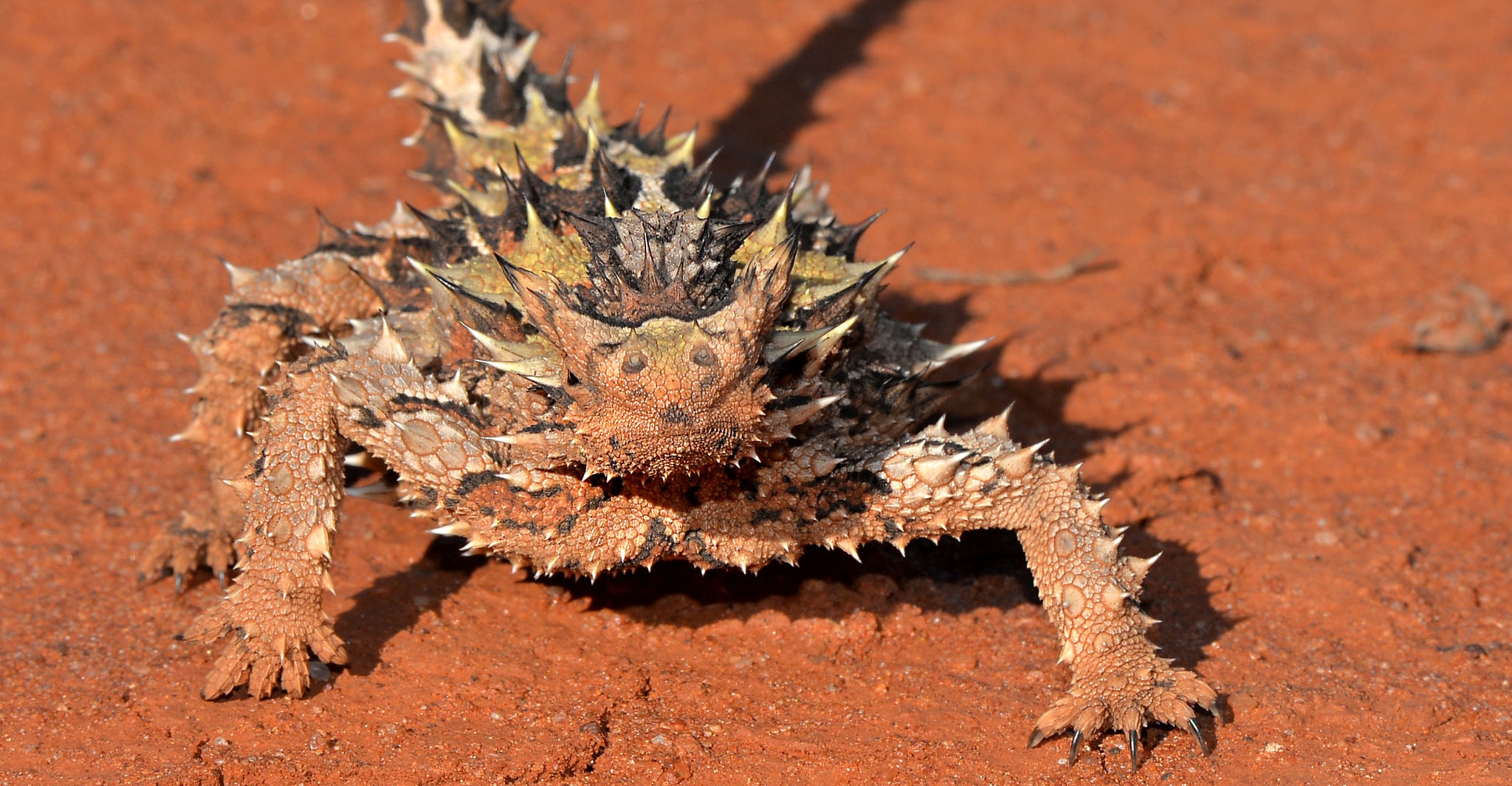
“The spiny devil lizard can certainly absorb and drink water while standing on a puddle of water. But they are not able to drink water if they just stand on wet sand because they cannot fill the capillaries. Therefore, they need Bury your body in the sand to maximize the contact area between your skin and the sand, as well as rely on gravity while drinking water, “ Withers said.
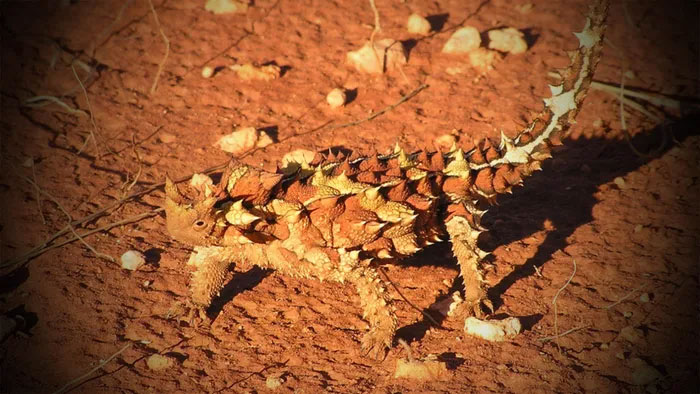 The spiny devil lizard has sharp spines covering its entire body.
The spiny devil lizard has sharp spines covering its entire body.
The Thorny Devil lizard has a unique feature: a layer of large sharp spikes on its back to help defend itself when needed. With sharp spines covering its entire body, the Thorny Devil lizard, also known as the Thorny Dragon, is like a prehistoric dinosaur, living in the desert in Australia, keeping all predators away.
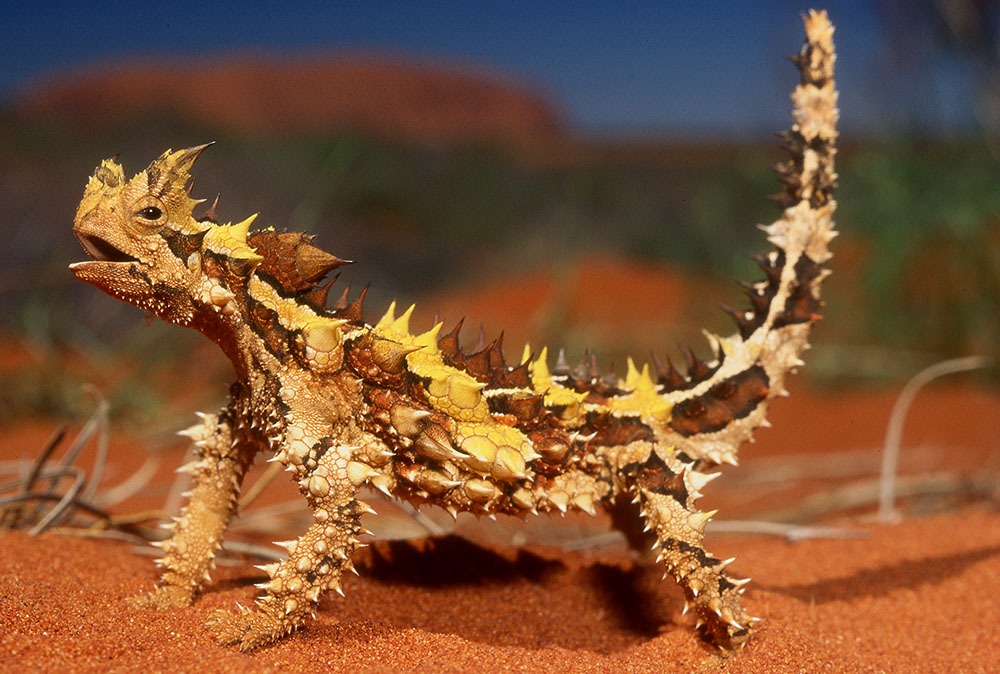
These lizards have camouflage colors of desert brown and tan that change from light to dark depending on the weather. The spines on the back also have the effect of absorbing water.
A unique feature of this species is the “false head” above the neck, which they use to distract predators when they feel threatened. When they feel threatened, they put their false heads forward, creating a threatening image to deceive predators.
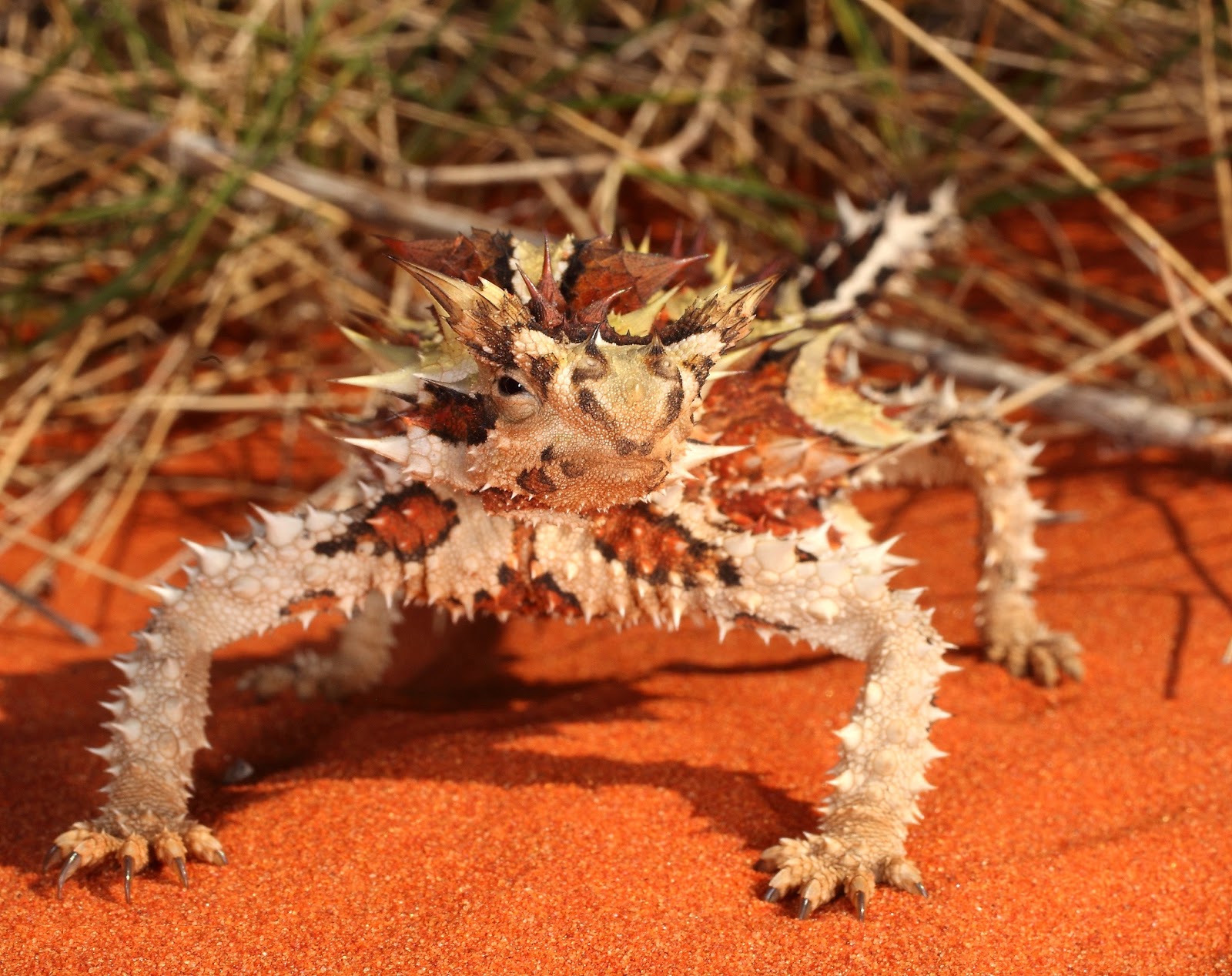
Adult females are usually larger than males. Usually females are about 80-110cm long and males will be no more than 95cm long. They can reproduce from the 3rd year onwards and when they reproduce they often dig burrows to lay eggs. This process usually takes place in October, November, December of the year.
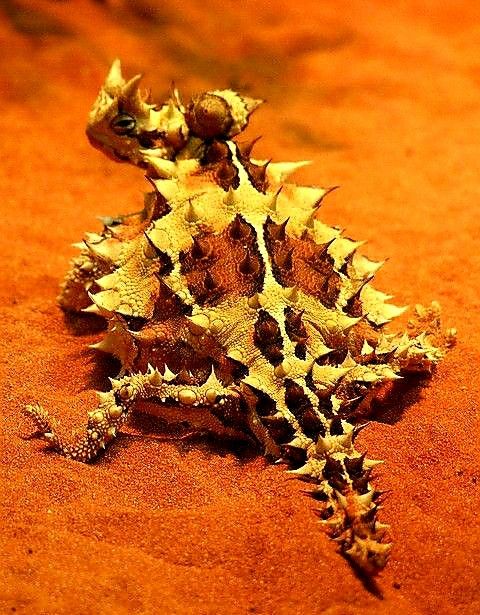
Spiny Devil lizards mainly eat ants and can eat thousands of ants every day. When it gets colder in the early morning and evening, their skin darkens to absorb more solar radiation. But at noon and afternoon, when it is hotter, their skin is light in color to protect against the sun.
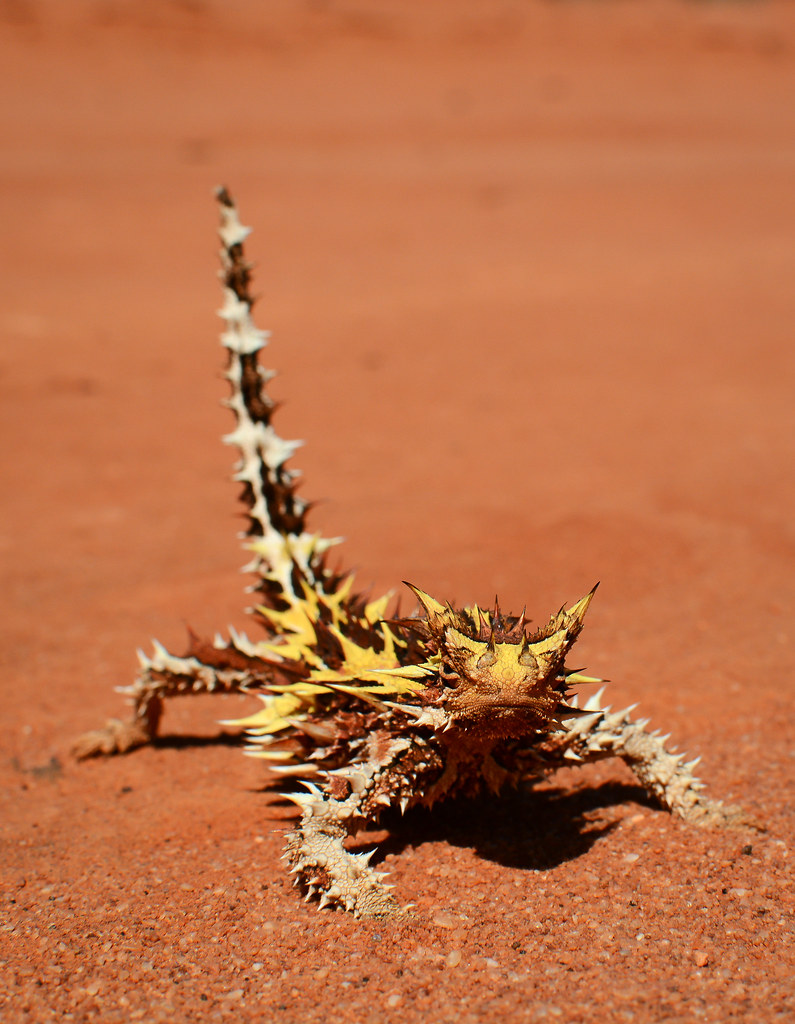
In addition, the eyes of the Thorny Devil lizard can spray blood streams up to 1.5m with very high accuracy. Each time it spits blood, the Thorny Devil lizard loses 1/3 of its original blood.





